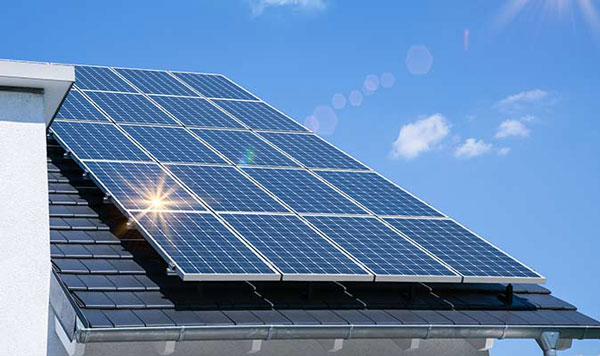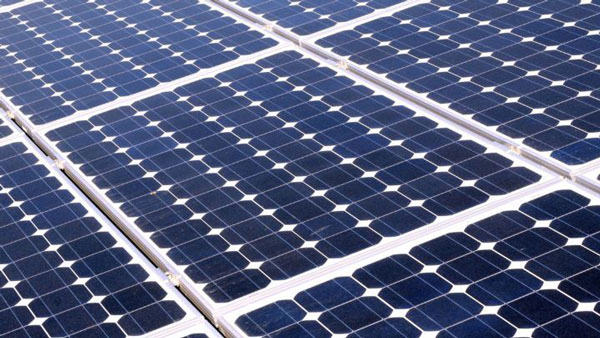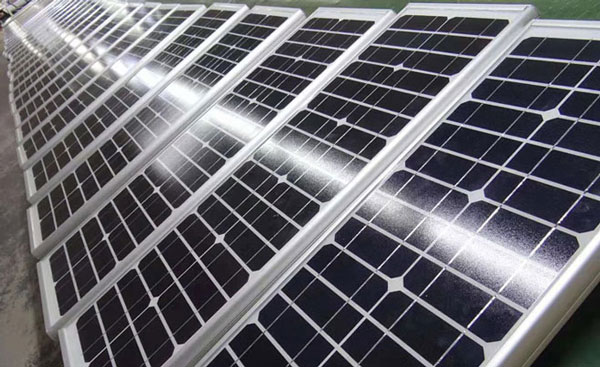Advantages of solar PV cells include renewable energy sourcing, significant reductions in carbon emissions, cost-effectiveness over time, scalability, minimal maintenance needs, energy independence, government incentives, and technological advancements.
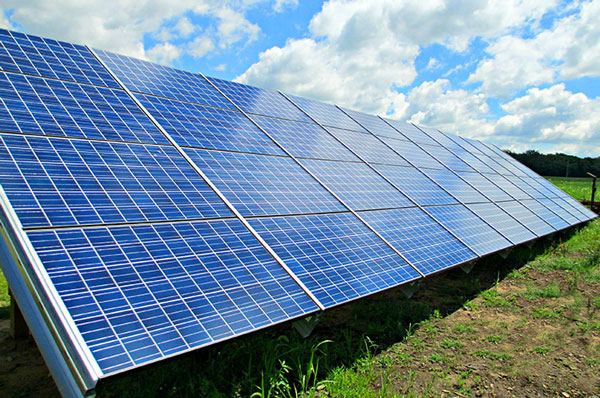
Clean Green Energy
Solar photovoltaic cells are leading the world toward a cleaner planet by converting sunlight into electricity. This type of energy does not emit toxic pollutants or gases that create a greenhouse effect in the earth’s atmosphere like its counterpart fossil fuels. So, this remarkable reduction in the carbon footprint of greenhouse gases is an essential benefactor to the planet. Solar energy is also an unlimited and natural resource. The sun showers our planet with about 1,000 watts of energy per square meter on average. Therefore, this resource is more than enough to meet all our required energy. In addition, unlike all other energy sources solar cells are the cleanest, and do not require any damage to the environment, such as building hydroelectric dams or extraction of coal.
Economic Benefits
One of the most highlighted features of solar PV technology is it is also economically feasible alongside its environmentally wise characteristics. The initial set up costs usually seem like a huge amount, but remembering the ongoing cost after the initial costs adds materiality to these amounts. The generation of energy by converting the sunlight directly into electricity is close to free. In addition, the maintenance costs of solar panels are also fairly low. The installation of solar cells to privately used premises are gradually increasing in many different parts of the planet, just because they are economic wise a good decision.
In many countries, there are also government grants and incentives such as tax reductions or even sometimes, pay-back policies for the energy produced with the solar cells. In addition, while the demand for energy grows and the supplies of fossil feuls decrease the utility costs begin to climb. The consumers with the installations of the solar PV cells guarantee that their costs won’t increase or spike.
Energy Independence
Because solar PV cells are generating electricity directly to the property, it gives a great sense of independence from the grid. In addition, the overpriced energy alternatives provided by the powerful gas and electricity companies cannot even affect the property owners, as they will have their own source of available power. The local economy will be stable in return, as each home will be less affected by the change in energy prices. It is also possible to become independent at a national level. Especially the unstable countries rich with oil, will not have to suffer from the recurring crises and constantly changing decision and prices of the oil and gas market. This will keep their capital within their own local economy.
Technological Development
The efficiency of solar PV cells are constantly developing with the new research and testing. The new designs of the solar cells are capable of altering more than 22$ of the sunlight that they receive from the sun into electricity. However, the level was %15 only a couple of years ago. So, the efficiency of the solar cells is rapidly changing as a result of extreme research and development.
Scalability and Versatility
This remarkable advantage is uniquely important to the solar PV cells, albumen other types of power sources. The panels and systems can vary greatly from very small and portable to great farms, which may cover acres of lands. They can be the source for just single homes or dozens. This is a great chance for its vast and unlimited amount of potential use. In addition, thanks to the technology, they can basically be placed on the rooftop of a house or a high building so their installation does not require a great amount of land. They can also be installed into already built structures such as solar shingles, which can substitute the normal roof covering. Building integrated photovoltaics also known as BIPVs will alternatively replace normal building materials to provide electric cost-free energy to the building.
Free Raw Materials
The exceptional advantages of solar PV cells feature the use of sunlight as a raw material. To put it simply, the resource is absolutely free, and no expenses are incurred during its utilization or extraction, unlike non-renewables, such as coal, oil, or natural gas. A number of other convincible benefits of solar energy sources can be observed:
Ubiquity and Infinite Supply
Every spot on the Earth is to some extent exposed to sunlight, which makes the resource universally available. The key implication is that every area can start utilizing this type of energy, regardless of the distance to oil, uranium, or gas. Moreover, by utilizing independent solar power systems, remote rural areas that have no access to a big city gird will end the need for any infrastructure development or improvement. Another opportunity should be interpreted in the aspect of the stable remuneration of workers employed in the process of solar energy production. Thus, unlike for oil or gas the prices of which is rather shaky and dependent on the geopolitical situation or oil supplies, sunlight has been shining above the Earth for millions of years and will continue to do so in the long term.
Predictability and Stability
In addition to being annually consistent over the Earth’s surface for millions of years, the resources of the planet have their own, quite predictable, cycles. According to already recorded and even foreseeable weather data, solar energy providers can calculate the amount of sunlight occurring on a specific spot with high precision and institution planning of energy production. In this sense, solar energy performance parameters are sustainable in comparison with oil and gas prices, which can fluctuate within days due to some news.
Transience and Efficient Economical Nature
Possessing very fast dissemination speeds, sunlight will start disappearing from the Earth about five billion years from now. However, the predictably quite formidable price offers the alternative for its gradual accumulation. In return, fossil fuels will be expended at an increasingly rapid rate in a constantly diminishing volume. The demand will go on growing, while the natural reserves are irreplaceably running out. For the time being, the comparable expensive costs include the exploration of actual reserves, oil, or gas drilling, transportation, and refinery.
Versatility
Solar photovoltaic cells are an example of versatility in energy generation. Their capability of being installed in diverse configurations and settings makes such technology a universal solution for energy apparatus in different degrees of complexity and scale for many applications. As such, solar panel installations can be adjusted to suit the energy needs of both small private and large commercial ventures.
Residential Installation
Household solar panels are installed on the rooftops of homes, but it is also possible to use such array type on the ground or employ solar roof tiles or shingles. Their affordable cost and roof space that can transmit a considerable amount of sunlight on the solar cells are what make them a viable solution for private use. Also, the energy demands of different households can be met with electricity produced in arrays that consist of a few kilowatts of identical cells.
Commercial Installation
Commercial ventures occupy estates with more massive areas that are mainly used as the roofs of the structure where solar panels can be located. The resulting electricity can cover a substantial part of the organization’s energy demand, thus significantly cutting expenses. As they can be adjusted to accommodate the needs of specific users, it is possible to generate many megawatts of electricity for industrial use.
Portable and Off-Grid Applications
Modern solar technologies are not limited to static constructions, and portable installations are a common tool in camping and on boats. The consideration of regions that are off the grid is of special importance, where solar energy can be employed to power schools, clinics, and water pumping systems. It is also a crucial factor in rural development as it increases the proliferation of electricity in restricted spaces.
Hybrid Solar PV Systems
Solar panels can also be installed in a hybrid system with other forms of renewable energy, such as wind or hydroelectric. In a variable climate, the combination of solar installations with energy storage via batteries smoothens the overall supply, ensuring that the buildings are powered throughout the day regardless of conditions. Such an arrangement has more operational stability and enhance system resilience. It is noteworthy that solar technology no longer powers only stationary apparatus, and it is integrated into mobile devices and transportation.
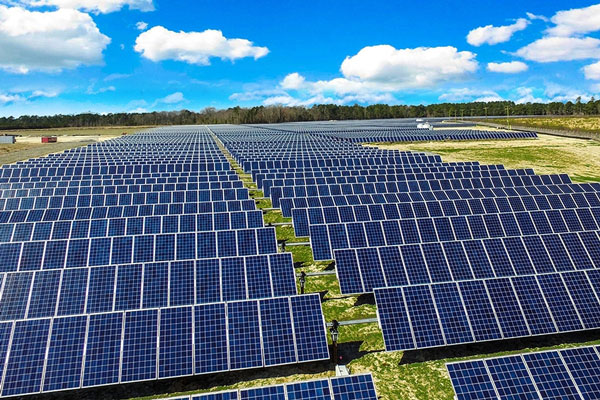
Tremendous Influence
Solar photovoltaic cells have a remarkable impact on the energy, economy, and environmental sectors. The innovation’s ability to produce electricity through sunlight makes it possible to power numerous applications and implement clean sources. It affects nearly everything from how energy is produced to its consumption.
Transformation of Energy Sector
It is evident that solar energy has been playing a critical function in the transition from fossil fuels to sustainable energy. As a result, the solar technology is projected to make a significant effect on power policies and markets. In 2020, solar electricity constituted about 3 percent of worldwide electricity. Consequently, the International Energy Agency estimates that it can jump to about 8% in the period between 2031 and 2040, while sustainable sources, which include hydro, wind, and sun and provide 10% of the world power, will grow by about 50 percent in 2026 from the current 10%.
Economic Growth and Job Creation
The solar industry has also played an active role in employment growth. It has a compound annual employment rate increase of 3% as between 2014 and 2019, equating to an overall job creation of over 11 million jobs.
Innovation
Nearly every technology requires improvements, and there has been a demand for more cost-effective and efficient solar tools. Therefore, the sector has been experienced continuous innovation intended to make the solar tool more affordable for everyone. Such innovations include the adoption of the bifacial cells, which collect sunlight from both sides, and the solar tracking systems that assist in tracking the sun’s movement. Additionally, the advancement in technology has helped boost the efficiency of power production and even encourage research in the solar panels and other sectors.
Policy implementation and Administration
Governments have also been involved in the response to the ever-competitive market by formulating various supplements, like tariffs, incentives, and taxes implemented to encourage solar expansion. These policies are vital as they offer the ordinary citizens a chance to utilize the solar energy source and lead to an increase in the number of solar households.
Cut Costs
Solar photovoltaic cells decrease energy costs for businesses, homeowners, and governments. However, the matter of arousing robust interest in this energy-efficient technology largely depends on its cost-effectiveness. The latter is determined by several conditions such as the low prices of solar technology and low operating costs. Specifically, the minimum price of installation boosted the demand for this energy-efficient form of power generation and attracted a broader clientele. Finally, tax incentives, rebates, and payments for net metering contribute to the technology’s appeal and make it an attractive option for a wider audience.
Reduced Installation Costs
The cost of installing solar panels has significantly decreased during the last decade owing to the technological progress in the industry and the higher scale of manufacturing these units. Thus, at the beginning of the 2000s, the cost of generating one watt of power was $10 while today, the prices range from $0.20 to $0.50 per watt. Hence, reduced costs of production have become the key reason driving the increasing popularity of solar technology since they make it a more affordable and accessible option for the majority of technologically advanced consumers.
Savings on Energy Bills
The second fundamental reason for the increasing appeal of solar technology is that it enables companies and homeowners to diminish their energy bills. After installing panels on a roof, a power grid or another facility, people can produce power inexpensively. The sun as the primary source of power is free while the operating costs of producing solar energy are as low as the bill for metering equipment updates in the long run. Finally, in numerous regions, businesses or households can sell surplus energy back to the grid and use net metering services to earn or save the money they would spend.
Low Maintenance Cost
Solar PV cells, which have already been discussed in the first section, are expensive to install, but they have comparatively low ongoing maintenance costs which make this power source even more attractive for energy generation purposes. In the long-run, the simplicity and robustness of solar panel systems play a significant role in their high cost-effectiveness.
Durability and Reliability
Solar panels are designed to endure severe conditions all year round without showing any symptoms of performance degradation. They do not lose their maximum efficiency in scorching heat or freezing temperatures for a very long time. Most manufacturers claim that their panels perform at their best condition for at least 25 or 30 years. However, after that period of time, the amount of energy a solar panel can produce might degrade less than significantly, leading to the fact that the replacement intervals and costs are reduced.
Simple Maintenance Requirements
Another significant reason which solar power systems are so cost-effectiveness is that they require little maintenance, and it is quite cheap. The maintenance routine for solar panels is limited to wiping it clean. The debris on top of a solar panel could be some leaves, dust, etc. that blocks part of the light of the sun. It is highly recommended to clean off the solar panels a few times per year, but most people just clean it once. This simple routine can be completed easily and quickly by the owners. If not, there are also companies that can clean off a solar panel at a low price.
Fewer mechanical parts
Since solar panels are designed to passively attract solar energy and create power from the solar cells behind the glass, the lack of any moving parts reduces the wear and tear to which systems with mechanical components are subjected. This ultimately means far fewer problems and repair costs.
Performance checks
Another great feature with solar panel systems is the lack of need to sue monitors and check the condition of the system on a daily basis, but since advanced technology allows for remote monitoring of the status of a solar panel on a smartphone or laptops, owners can track the performance of their solar panel systems in real time on their phones or computers. Energy data is produced in real time, and maintenance workers will be alerted immediately, significantly reducing the chance of a significant system failure.
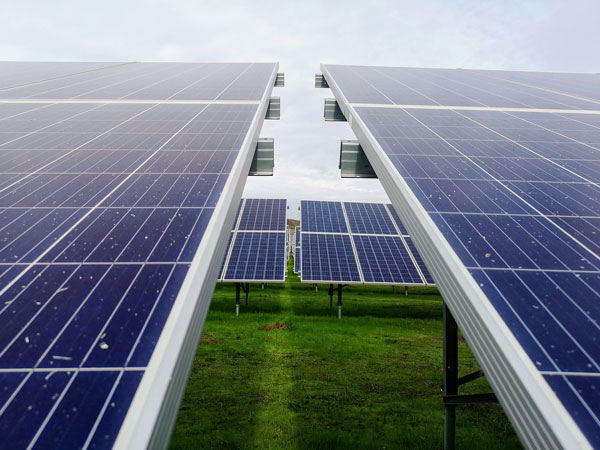
Silent Operation
One of the benefits of solar photovoltaic cells that are not as often mentioned as the freedom from electrical bills, the decrease in greenhouse gas emissions, and other popular advantages, is the fact that they are silent. This may seem as a minor detail in the context of a long list of useful properties, but the absence of noise may be one of the factors that will free our future from the contamination of solar energy with any traditional forms of it.
Noise-Free Energy
Any generator produces noise, ranging from not too loud to very unpleasant, if not harmful. A wind-powered generator is a prime example of a clean but noisy way to generate power. The fans in the air-operated generators make a constant buzzing that at times forces technical experts and all sorts of specialists to have to put on professional noises canceling equipment to not lose their hearing. In addition, it also produces vibrations that can be harmful to the mechanism in the long run. Solar panels also have no moving parts, so they generate no mechanical sound.
Property Appeal
Finally, noise pollution is an issue that is quite important for big cities where people are packed like sardines on a million acres and office spaces are immediately followed by residential ones. There, in many cases, homeowners and property developers also use the quiet work of solar cells as an extra advantage when buying and selling property. There is never too little noise in a million city.
Compatibility with Sensitive Locations
And there are places where there is no noise either. A quiet medical center, for example, is a place where no excess noise should be generated, including energy production. The same applies to a hospital, library, or school, not to mention residential homes or wildlife reserves, where even solar panels are preferable to noise levels from the wisest sources of energy.
Easy to Install
Solar photovoltaic cells cells PV cells are world famous for their ease of installation, which has made them accessible to a large diversity of users, from private residential house owners to commercial small-business operators. The simple pizza-like installation mode is the primary advantage of solar energy that has caused its wide popularity across the globe.
Standardized Components
All the components of a solar panel come in a standardized way, from photovoltaic cells piled inside the panels to system components and racking. The standard set of mounting components is a part of a typical solar panel installation, including attaching a solar panel to a roof or any kind of ground-mount. The process of connecting the panels to an inverter and integrating the whole system into the electricity grid is really simple and requires no additional tools or parts. All the components have been designed for quick assembling and are compatible with each other, raising simplicity and less time consumption problems.
Variety of Options
One of the advantages of such simple installations is the fact that they can be assembled in a variety of locations and ways. Thus, solar panels can be installed on roof mount, as separate panels for ground mounts or as a part of ground mounts: all that depends on the customer’s preferences. There are also building-integrated and building-applied systems that allow integrating PV cells into building materials. Such installations can be ordered in various colors and sizes and mounted on different objects from urban roofs to rural land or carports. It is even possible to create floating photovoltaic installations on water bodies. All this diversity makes installations of energy sources as simple processes as possible.
Minimal Disruption
Another advantage of solar panel installations is the fact that they take only a couple of days. Moreover, the process of installation is not disrupting the household or business communication or interpersonal relationships. In private residential houses, there is no need to leave one’s home to accomplish the installation while the small business can continue working without being affected by the installation process. Installation of solar panels requires no expensive equipment and no heavy construction for several months as other energy sources, including nuclear power plants, do. Thus, no destruction is made from the process – instead of it only a benefit is gained.
DIY Installation Potential
For small systems, such as house systems, installation of a solar panel can be also an advantage because, in many cases, it is a work of the owner him/herself. No additional payment for installations works is required. Many suppliers offer typical solar panel kits with system components and detailed instructions of every step of the work, which can be a part of fan activity during a weekend. Such simple installation process makes ease of the assembly and installation of solar panels even more beneficial, cost-effective and spreading across the population.

